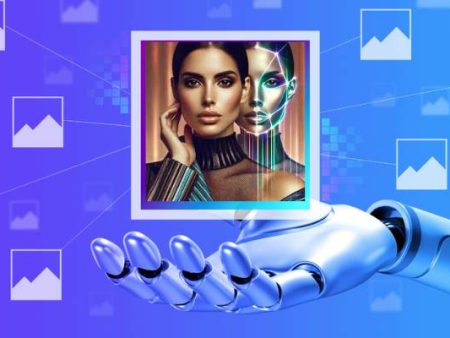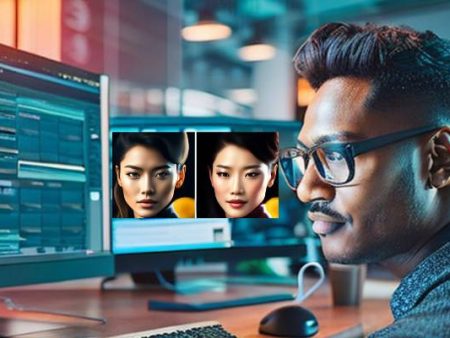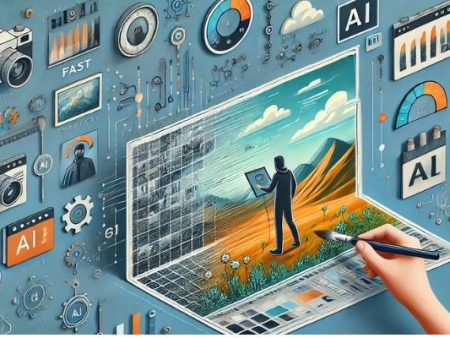Photography has always been about more than just capturing reality. It’s about telling a story, shaping a mood, sometimes even bending the truth a little to reveal something deeper.
But now we’re stepping into a new chapter where those stories aren’t just guided by the eye of a photographer—they’re co-written by algorithms.
AI has entered the darkroom, only this time the darkroom is digital. Editing, retouching, and enhancing images has always been part of the photographer’s toolkit, but with AI, the process is accelerating, transforming, and in some cases raising uncomfortable questions.
Can a photo still be considered authentic when an algorithm does half the heavy lifting? Does AI editing empower photographers or make them disposable?
These questions hover over every conversation about the role of AI image editing in professional photography, and in this piece, we’ll look at them from every angle.
The New Editing Partner
AI-powered editing tools have exploded in popularity over the past five years. Adobe Photoshop’s Generative Fill, Luminar AI, and apps like Topaz Labs are just the start.
Instead of carefully painting over blemishes or cloning backgrounds pixel by pixel, photographers can now type in commands or use sliders to perform tasks that used to take hours.
Want to remove power lines from a landscape? Click once. Want to swap a cloudy sky for a sunset? Done in seconds.
This is where AI insights on retouching: goodbye to human manual labor comes into play. For many professionals, it feels like finally being freed from the repetitive chores of editing.
But freedom isn’t always so simple.
The History: How AI Is Making Old Works New Again
To understand the present, it helps to look backward. Historically, editing tools have always caused controversy.
When Photoshop arrived in the late 1980s, many photographers accused it of “cheating.” Now, nobody bats an eye at digital editing—it’s part of the craft.
Today, AI is playing the same disruptive role. Only this time, it’s not just about giving photographers new tools—it’s about how AI is making old works new again.
AI-based restoration projects can revive faded family portraits, colorize black-and-white photos, and even repair scratches and tears in archival images.
The upside is huge: history itself becomes more vivid. The downside? Some critics argue it’s rewriting memory, altering history’s authenticity in ways we may not fully understand.
Exploring Backgrounds with AI: Time-Saving or Story-Loss?
One of the most celebrated (and controversial) features is background editing. Photographers used to spend hours masking subjects, carefully layering images, or arranging elaborate sets. Now, exploring backgrounds with AI: time-saving is just a few clicks away.
This is incredibly appealing for commercial photographers. Need a clean background for an e-commerce product? AI handles it instantly.
Shooting portraits for corporate profiles? AI can drop in a neutral office backdrop without the hassle of finding a real location.
But what do we lose in the process? Backgrounds often carry subtle narrative weight—the messy bookshelves behind a writer, the rainy street outside a café window.
When AI replaces those with sterile perfection, does the image still tell the same story?
I’d argue this is one of AI’s greatest risks: in making things faster, it sometimes scrubs away the imperfections that made photographs human.
The Photographer’s Perspective: Relief and Anxiety
Talk to working photographers, and you’ll hear mixed emotions.
On the one hand, AI reduces burnout. Editing used to take up as much time as shooting, sometimes more.
With AI, photographers can return to focusing on their craft—the artistry of capturing light and emotion—without drowning in tedious post-production.
On the other hand, many feel anxious. If clients can achieve passable results with AI editing apps, will they still pay for professional expertise?
Already, some wedding and portrait photographers report losing work to couples experimenting with DIY AI editing tools.
It’s not the end of professional photography, but it’s definitely a shakeup.
AI Insights on Filters vs Traditional Editing
Let’s talk about filters—because they’re everywhere. AI has taken them to a new level. Instead of manually adjusting exposure, contrast, and hue, photographers can now apply style-based filters that mimic cinematic moods, vintage looks, or even specific artists.
Here’s where the AI insights on filters vs traditional editing: debate gets interesting.
- Traditional editing requires skill, time, and intentionality. A photographer shapes the image layer by layer.
- AI filters can deliver jaw-dropping results instantly, but often without the same nuance.
The danger is that images start looking homogenous. If everyone uses the same AI-powered “cinematic portrait” filter, the individuality of each photographer’s vision gets blurred.
Still, these tools aren’t inherently bad. They can be a launchpad. The key is whether photographers use them as shortcuts—or as starting points for deeper creative work.
The Authenticity Dilemma
The heart of the issue is authenticity. A photograph has long been understood as a record of something real.
Even in highly edited commercial work, there was still an underlying truth: the model stood in front of a camera, the light fell across their face, the shutter clicked.
With AI, the line gets blurry. If a portrait is smoothed, reshaped, and retouched until it barely resembles the original, is it still photography—or is it digital art? Does it matter?
Some say no—it’s all creativity. Others say yes, especially in fields like journalism or documentary work where truth is sacred.
Authenticity isn’t just a philosophical question. It’s also legal. The National Press Photographers Association has raised alarms about AI editing in news photography, warning it could undermine public trust if not clearly disclosed.
Statistical Snapshot: AI in Photography Today
The adoption of AI in photography is already significant:
- According to a 2023 survey by Zenfolio, 71% of professional photographers said they were using AI editing tools in some capacity.
- Adobe reported that over 90% of creative professionals now use AI-assisted features in Photoshop or Lightroom.
- The global market for AI in image editing is projected to grow at over 25% annually, reaching billions by the end of the decade (MarketsandMarkets).
Numbers aside, the sentiment is clear: AI isn’t a distant future—it’s here, and most professionals are already adapting.
Beyond Efficiency: The Emotional Cost
We’ve talked about time savings and workflows, but let’s not overlook the emotional side. Many photographers describe a bittersweet feeling: relief that the burden of editing is lighter, but grief that part of their craft feels diminished.
There’s pride in knowing you spent hours perfecting a portrait, just as there’s pride in musicians who record tracks live without heavy editing.
When AI collapses that effort into seconds, some feel robbed of the labor that gave their work meaning.
That doesn’t mean photographers should resist change, but it does mean we should acknowledge the sense of loss. Technology doesn’t just reshape tasks—it reshapes identity.
Ethical and Legal Concerns
Several thorny issues remain unresolved:
- Ownership: If AI makes substantial changes to an image, who owns the final product—the photographer, the client, or the AI tool provider?
- Bias: AI trained on certain datasets may reinforce problematic beauty standards or stereotypes.
- Disclosure: Should clients and audiences be told when an image has been heavily AI-edited?
These questions matter because photography isn’t just art—it’s also communication, commerce, and history.
Looking Ahead: Collaboration, Not Replacement
So, will AI replace human editors entirely? I don’t think so. What it will do is redefine their roles.
Photographers may evolve into directors of AI workflows, using prompts and tools to achieve faster drafts before refining them manually.
Entry-level retouchers might see their roles change, but new specialties will emerge: AI prompt engineers, digital authenticity auditors, hybrid photographers who combine camera work with AI artistry.
The challenge is ensuring AI empowers rather than erases human creativity. That requires thoughtful adoption, clear ethics, and respect for the artistry that makes photography more than just pixels.
Conclusion: A Mirror with Two Faces
The story of AI in photography is a mirror reflecting two futures. In one, AI frees artists from drudgery, unleashes imagination, and makes creative expression more accessible than ever.
In the other, AI dilutes authenticity, homogenizes style, and sidelines human skill.
Both are possible. Which one we get depends on how the industry—and society—chooses to integrate these tools.
For me, I believe the human element will always matter. Because photography isn’t just about perfect images.
It’s about presence, connection, memory. AI can polish pixels, but it can’t feel the moment the shutter captures. That part, at least for now, remains beautifully, stubbornly human.


